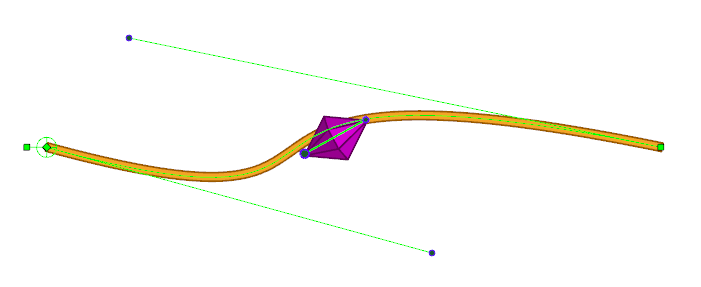The Point Kinematic Output allows for up to three different tracking points. Using multiple tracking points results in different transformations and allows for drawings to track and transform in different ways.
One-Point Sampling

One-Point Sampling will track the deformation and apply a simple translation in order to match the deformation. The applied transformation will have no rotation or scale, and will simply translate the drawing to match the tracking points.
Two-Point Sampling

Two-Point Sampling will track the deformation with two points and will apply a constrained transformation in order to match the deformation. The applied transformation will rotate and translate to best match the two tracking points, but will not scale. This sampling method is useful for having drawings rotate with a surface to track the deformed position, but not squash and stretch relative to the deformation.
Two-Point Sampling with Scaling

Two-Point Sampling with Scaling will track the deformation with two points and will apply a constrained transformation in order to match the deformation. The applied transformation will scale, rotate and translate to best match the two tracking points. The squash-and-stretch is applied similar to the 2-Point Constraint, and uses the Volume Modifier Property to define the ratio of the squash and stretch.
Three-Point Sampling

Three-Point Sampling will track the deformation with three points and will apply a full transformation in order to match the deformation. The applied transformation will scale, rotate, translate and skew to best match the three tracking points.
The Three-Points Sampling mode is especially useful for rigging a drawing to an area inside a deformed drawing. While the other modes use a limited set of transformations meant to track along a curve, the Three-Points Sampling mode causes the Point Kinematic Output node to make all the necessary transformations to make the drawing track with the shape of the deformed drawing.
The Point Kinematic Output can also be used to track points in an envelope deformation.
